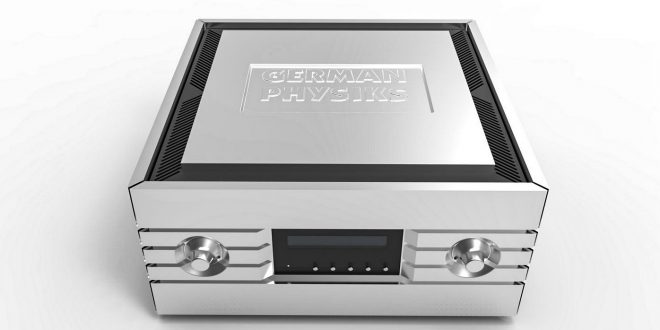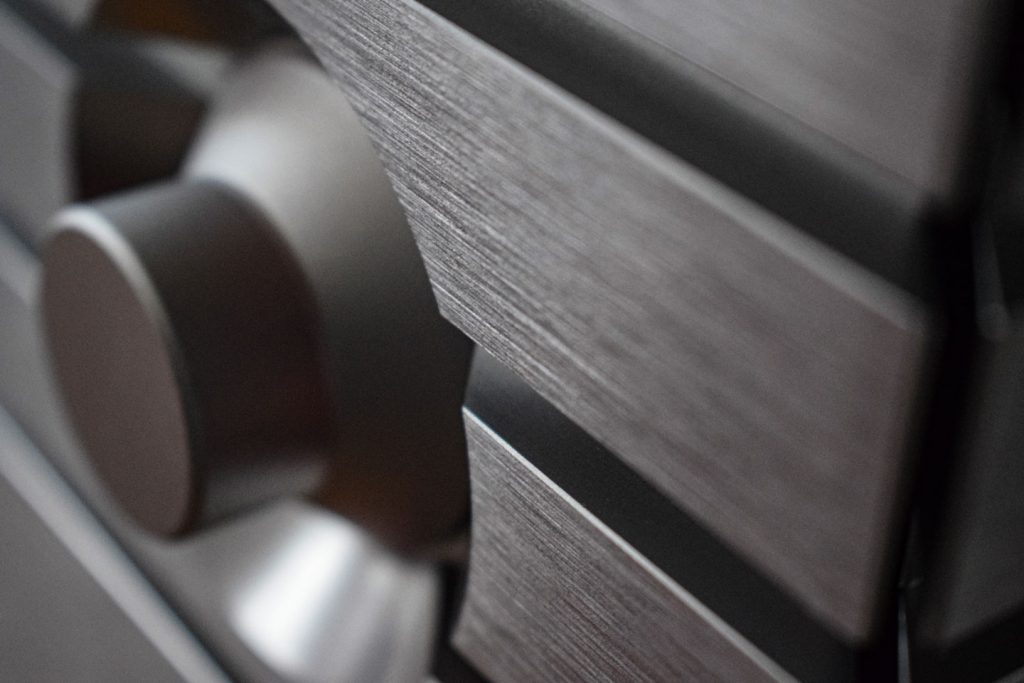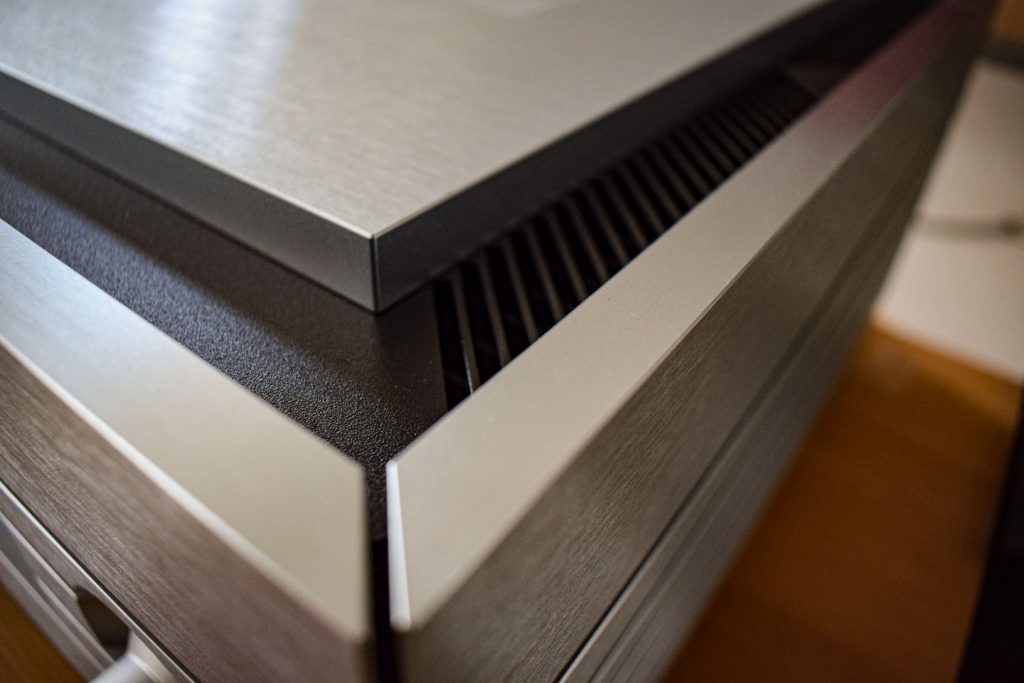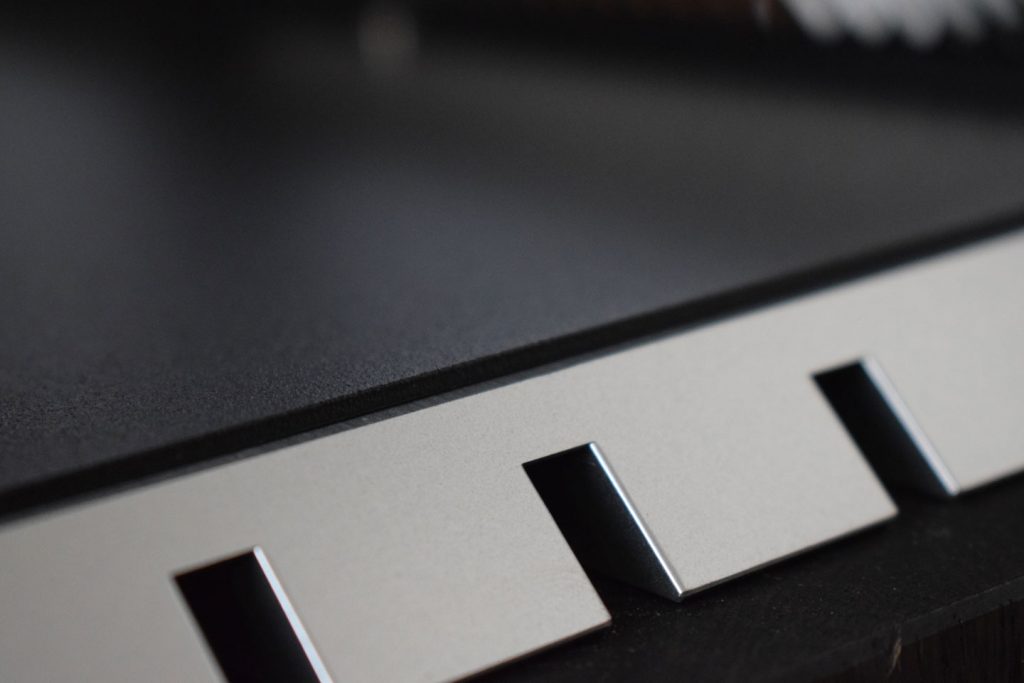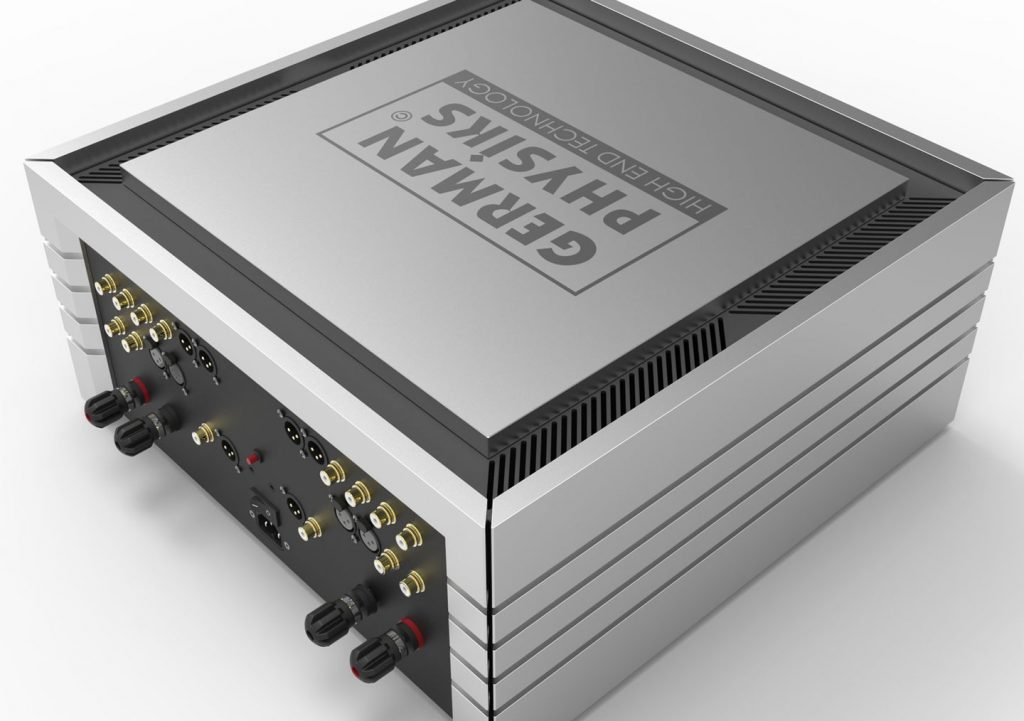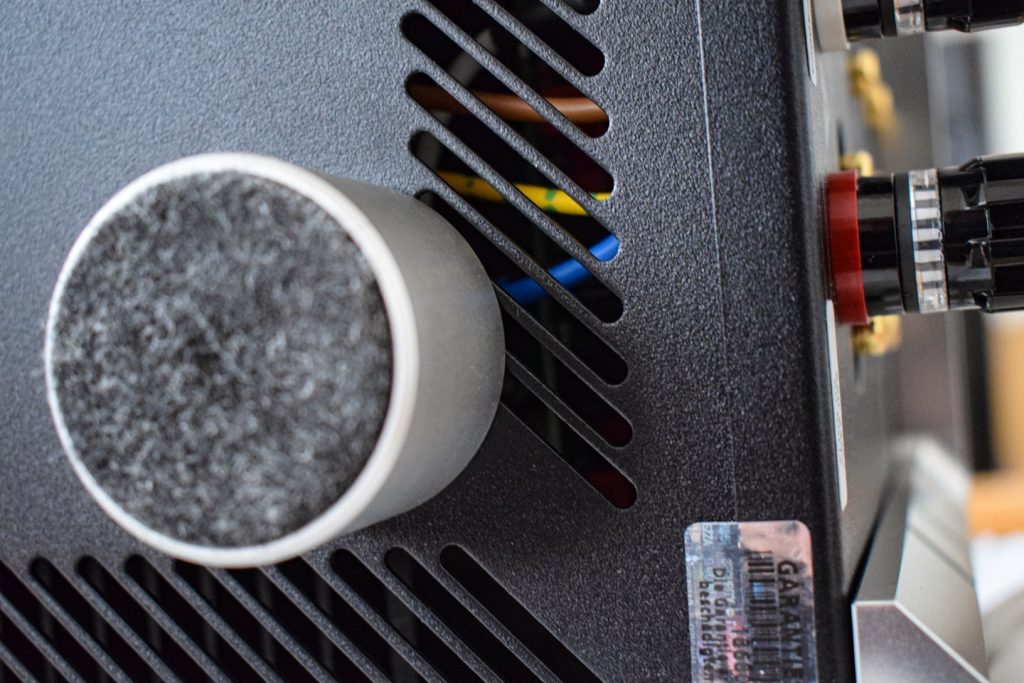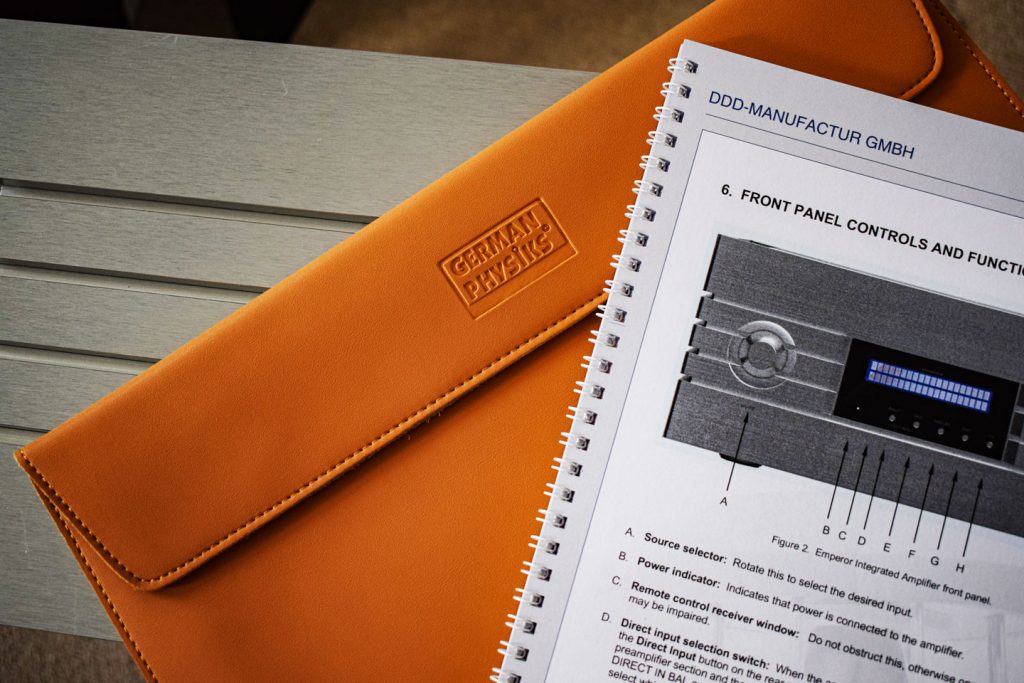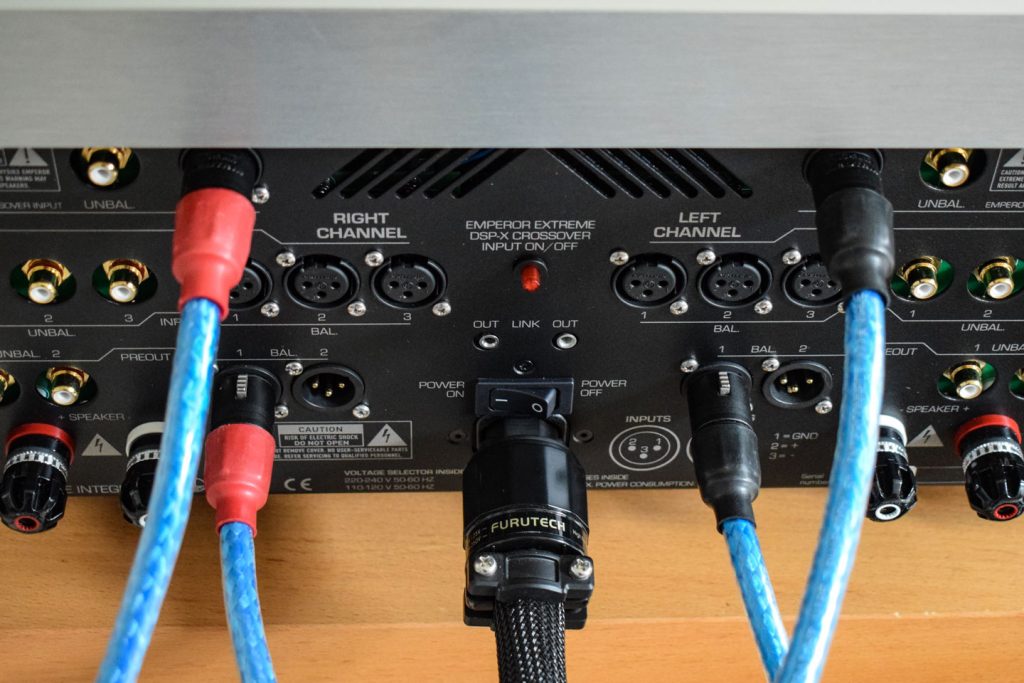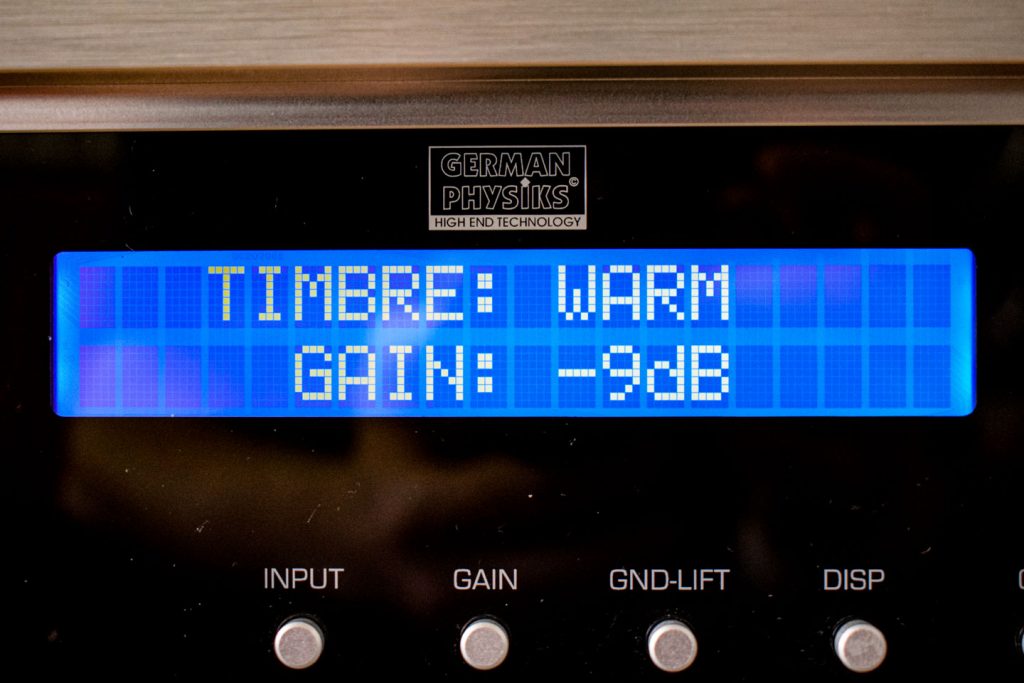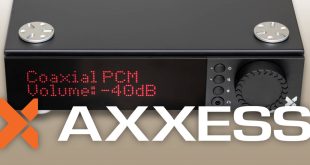The loudspeaker specialist German Physiks from Maintal in Hesse was not previously known for its amplifiers. How could you? There were none until recently. But now the manufacturer of extravagant sound transducers has developed equally extravagant amplifier electronics. Normally we at LowBeats stay away from such sinfully expensive stuff. But in this case, initial listening tests left us no choice. So we asked the “smallest” component, the German Physiks The Emperor integrated amplifier, for a test and were immediately impressed. “Heavy” is to be understood ambiguously here, because this integrated amplifier is a mountain 24 centimeters high (width and depth 47.5 cm each). A structure made of 60 kilos of aluminum, steel and electronic components. That is a word of power. And another announcement: apart from the display control, nothing on this amplifier is digital.
Anyone who enters German Physiks into a search engine query will receive surprising feedback from the depths of the Internet. The first thing that irritates us is that the website is in English. No German translation. You don’t have to be a prophet: The company headquarters may be in Germany, but the actual market is linked worldwide.
At its core, German Physiks boss Holger Müller sells large-format floorstanding loudspeakers with bending wave cones. It can become incredibly large and heavy. The new flagship called Gaudi Mk III, a loudspeaker the size of a sail, weighing just under 500 kilos and costing almost half a million euros, is about to be launched. Müller thinks big. Also in terms of prices.
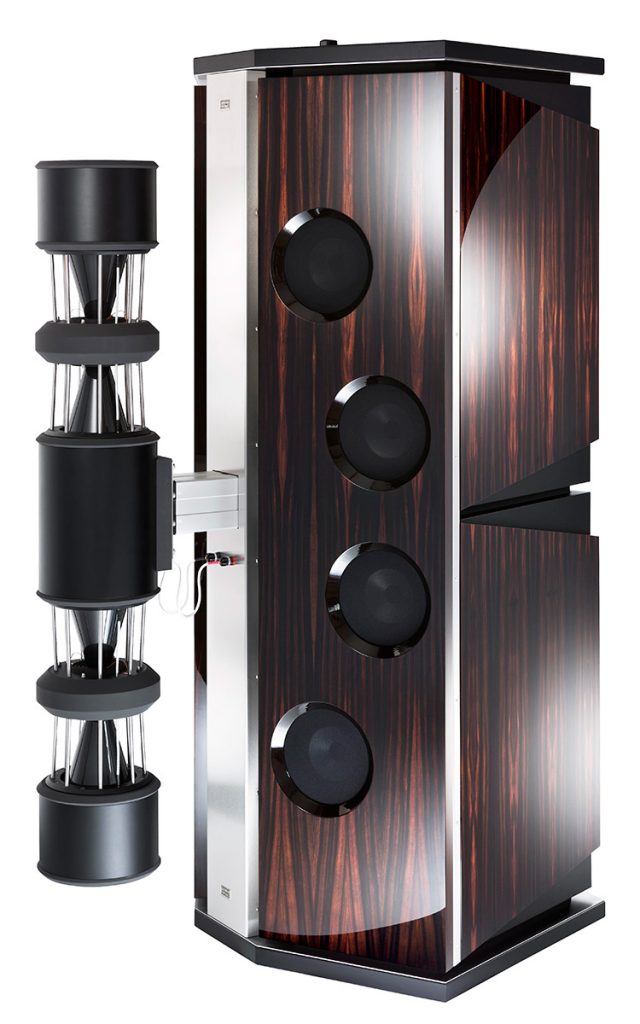
However, the knowledge of loudspeakers has been acquired over many decades, and amplifier technology has not yet been on the development plans of German Physiks. That’s why Müller sought support from someone who knows the ropes. Stefan Rath, mastermind of the Meracus System Engineering development office, is a bright mind and has been enriching the scene with ingenious designs for ages. He was awarded the contract for the project. “Always take the best,” Müller is said to have said, “and always enough of it. If the project takes a year and the amplifier ends up costing 20,000 euros, that’s okay too.”
The concept of the German Physics The Emperor
It took over two years to develop and the amplifier now costs 30,000 euros. This is probably why Müller calls his new and first integrated amplifier “The Emperor”. The emperor does the honors. Anyone buying the German Physiks The Emperor Stereo Integrated Amplifier (as it is called in full) should have good friends to lift it onto the shelf – this monster weighs 60 kilos. Or the local dealer takes over the job. After all, it has taken a significant chunk out of the sales price: the good piece costs 29,900 euros. You can feel the luxury. This is a massive block of solid aluminum, comprehensively shielded with other metals. This integrated amplifier can hardly be overtaken in its consistency. Needless to say, digital circuits such as processors or DACs are strictly forbidden in this fortress. Nevertheless, one mini-circuit has made it: the display control. But of course it has its own transformer…
The fans are drawn to precisely this scent. Here we are in the world of Rolls Royce, who also only say: adequate, sufficient. German Physiks also only lists the figures. At eight ohms? 300 watts. At 4 ohms? 600 watts. At 2 ohms? Well over 1,000 watts. We are of course talking about the power per channel. That is exuberant. It is the start of a luxury racing car.
Before the big test, let’s take a look under the hood. But The Emperor doesn’t make it that easy for us: after removing the lid and side panels (this is a uniform construction weighing at least 15 kilos), we have the engine block view of a large BMW 7 Series in front of us: everything flat, no gaps in the fully filled engine compartment. You can’t see much, but you can make out the power station underneath.
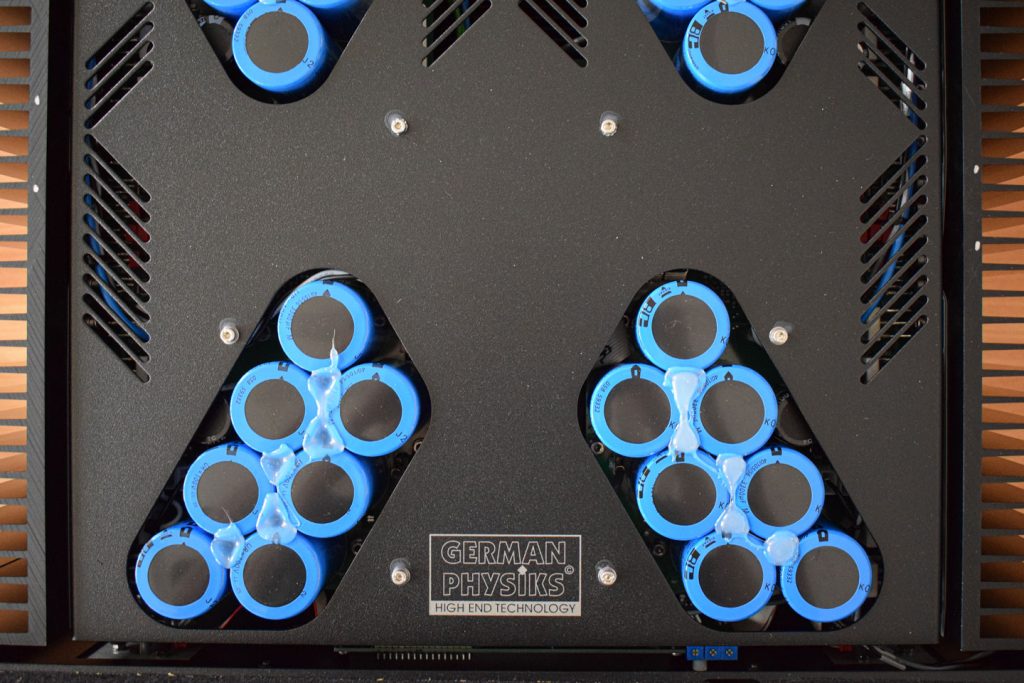
And even after loosening another armada of screws, the steel plate does not reveal the entire view, as His Imperial Highness has a two-storey structure. Most of the components are located on the Belle Etage (i.e. at the top). 24 transistors (12 per channel) work themselves hot on the heat sinks. Speaking of which, the German Physiks has an ingenious heat management system that uses most of the openings (or slots) to dissipate the heat. Because there is plenty of heat with so much power and you wanted to get by without a fan.
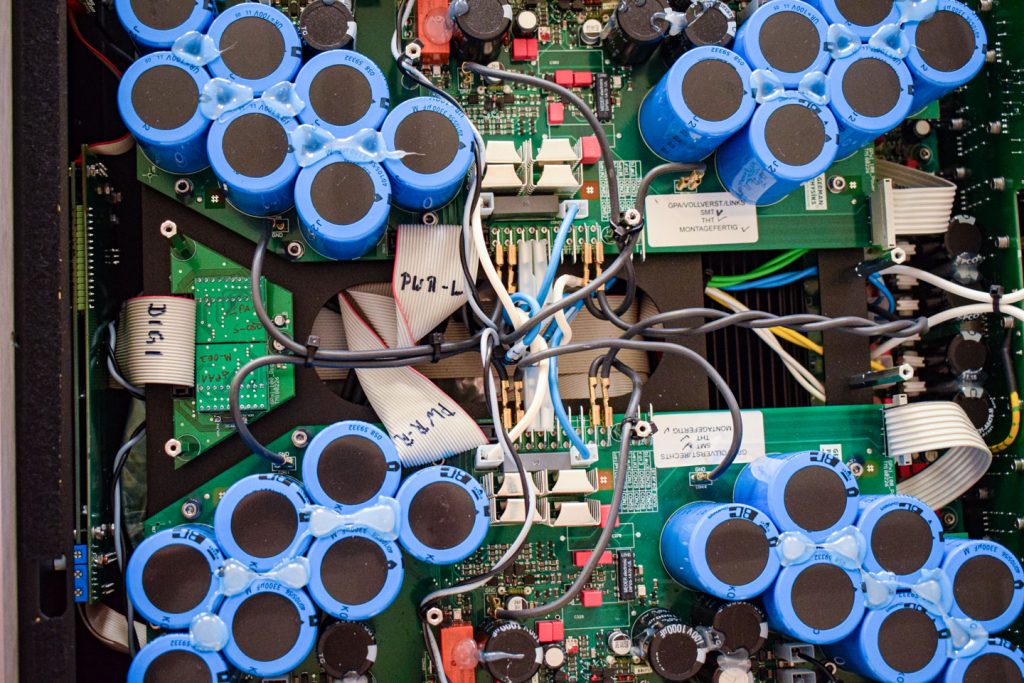
The somewhat wild-looking cabling is astonishing given the perfection of the construction. Müller: “The first models looked really good; we routed everything through the circuit boards. But shall I tell you something? It didn’t sound. The current solution with the additional cables is the result of long, long listening sessions…”
The ground floor of The Emperor is the engine room of this mega power pack. If you take a look inside, you will find five transformers: Each individual component has its own power supply, preamp, mono left, mono right, plus the control unit and the display. That is pleasantly ultimate.
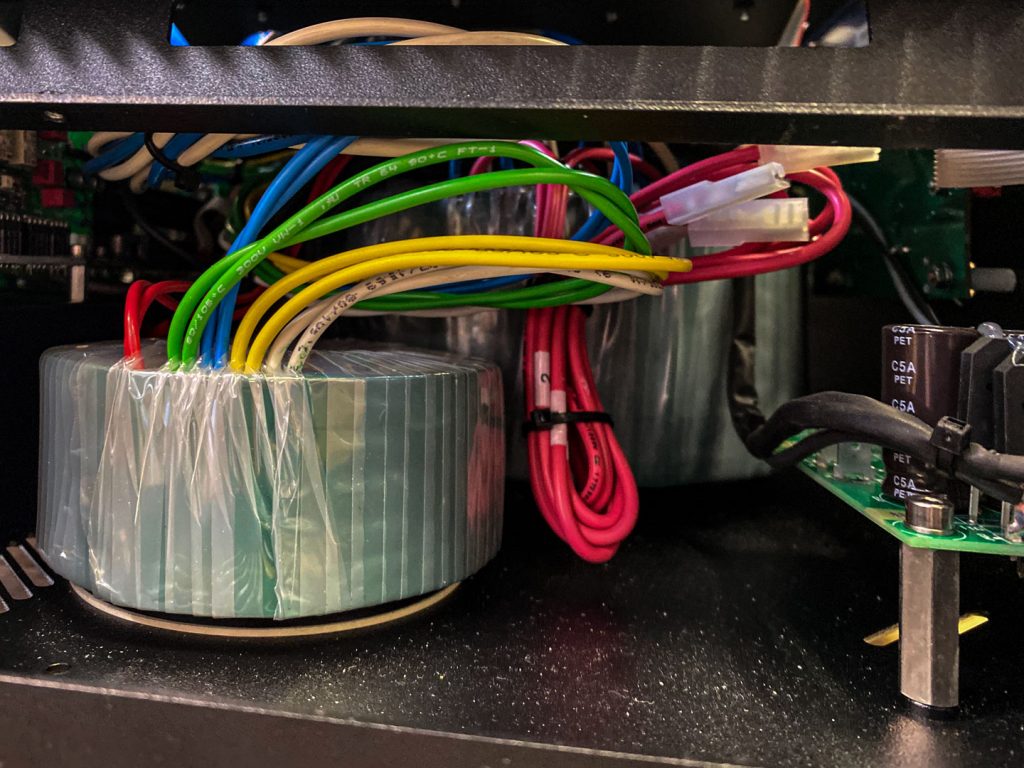
The design allows several operating options. This allows us to separate the integrated amplifier and route only the preamp signals to external power amplifiers. Or we can access the Emperor’s power amplifiers from an external preamp. Or we can loop in an active crossover between the preamp and power amp (as is necessary for the large German Physiks speakers). Or even more unconventional: you connect the preamp and power amp via the inputs and outputs on the back using XLR cables. Then you press the red button in the middle of the connection panel and you are in direct-in mode, which offers a gain (i.e. level) adjustment, but also gives the sound image a different note: neutral, warm or analytical.
What else is there to see and wire on the back? The company boss has given the message: XLR goes over RCA. The range of symmetrical connections is powerful. It goes in three ways, plus a pre-exit. The cinch sockets almost seem to have a parallel life. When it comes to speaker terminals, Müller and Rath also rely on the best that is possible: Next Generation WBT connections.
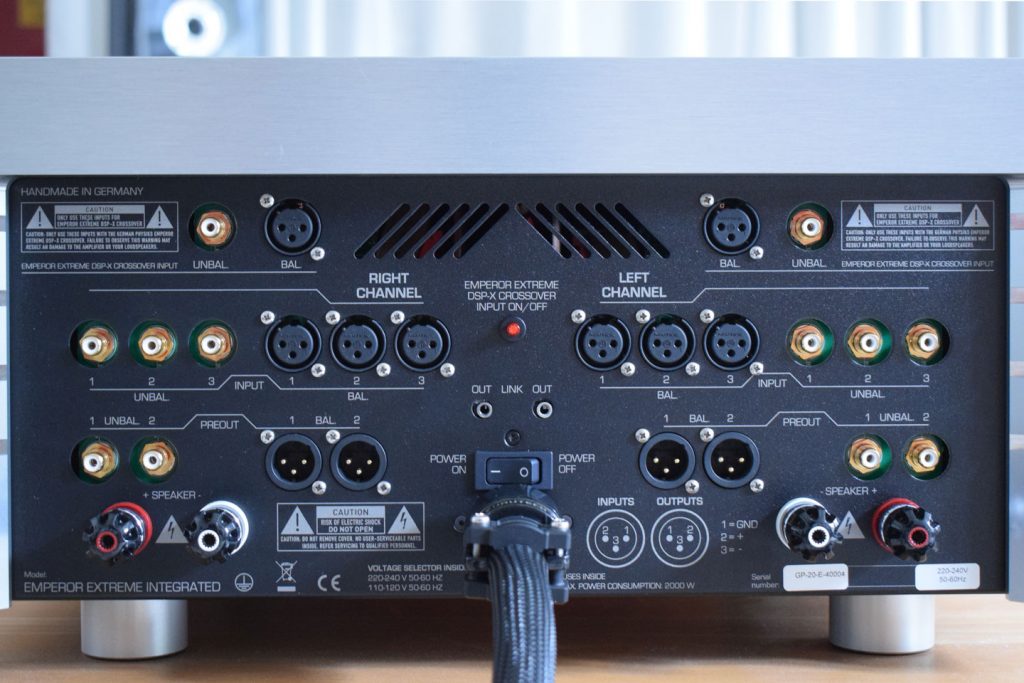
Everything is clearly laid out. The front also follows the same message. One rotary knob for the volume, another for the options inside. They are quite opulently staggered. If we need them. If, on the other hand, you are traveling stringently, you will probably only need the source and perhaps the level of bass and treble.

Hearing test
Music! That’s the whole point of this cube and this magazine. So we start the engine. It has a name: Qobuz – If you haven’t heard him yet, this is the best source for modern streaming. An incredible number of albums are available here, more than in most private collections. Plus the best contemporary resolution. Like the new album by Fontaine’s D(ublin) C(ity), for example. Was recently LowBeats Album of the Week. A Hero’s Death exudes powerful energy. The introduction was given over to just one instrument, an electric guitar, undistorted hard right. Then the sound is given a powerful boost, with the bass on the left providing the counterpart. In the middle, the drums with a shattering bass drum. Everything is tidy, but also real killer music for the amplifying electronics. Everything must appear light, but the bass eats up watts.

Not a hint of a problem for the Kaiser of German Physics. This pure presence of drive and strength is fascinating. There are good little amplifiers that I love because of their inner harmony, but this unlimited pressure… For the first time in a long time, I’ve rediscovered my fascination with mudflat orgies. You can tap 600 watts into four ohms. With high-level loudspeakers like the Heco La Diva can tear down houses. In the very next track, “Love is the Main Thing”, Fontaine’s D.C. no longer allows himself to be kept on a leash. This could also be punk from the eighties. Driven, wild, with a real will to destroy. The Emperor took it like a finger exercise. Give me more – the potential of pure power seemed inexhaustible.
But is it really music? Yes, a resounding yes. Fans are currently enjoying the reissue of Closer, the legendary album by Joy Division. My goodness, how fresh and up-to-date that sounds. The cover has now made it onto a number of T-shirts. This is an icon, 40 years old. My wife says it’s just noise, I say it’s fine food, the best of what the early eighties captured. My wife is also right: the mix is extremely greasy, there is hardly any room to breathe. “The Eternal” is of course my favorite song. The bass takes over. Each melody line is built up from the bottom. It was great how the German Physiks staked out the space. Dark-dark-black background. That is also a quality: how strong and concrete is the contrast from which the music stands out? Great values, great art from the Emperor.
In the last few weeks, all speaker tests have also been carried out with the German Physiks The Emperor. And again and again the same impression arose: Hey. I’ve never heard it this good. This was particularly impressive when test of the new Dynaudio Contour 20 (now in the i-version), because we used it to listen to virtually all the large and expensive amplifier components of the last four years. For direct comparison, however, we only had our reference amplifiers SPL Director Mk2(preamplifier) plus SPL Performer m1000 (mono power amplifiers) and the ingenious tube amp Westend Audio Monaco.
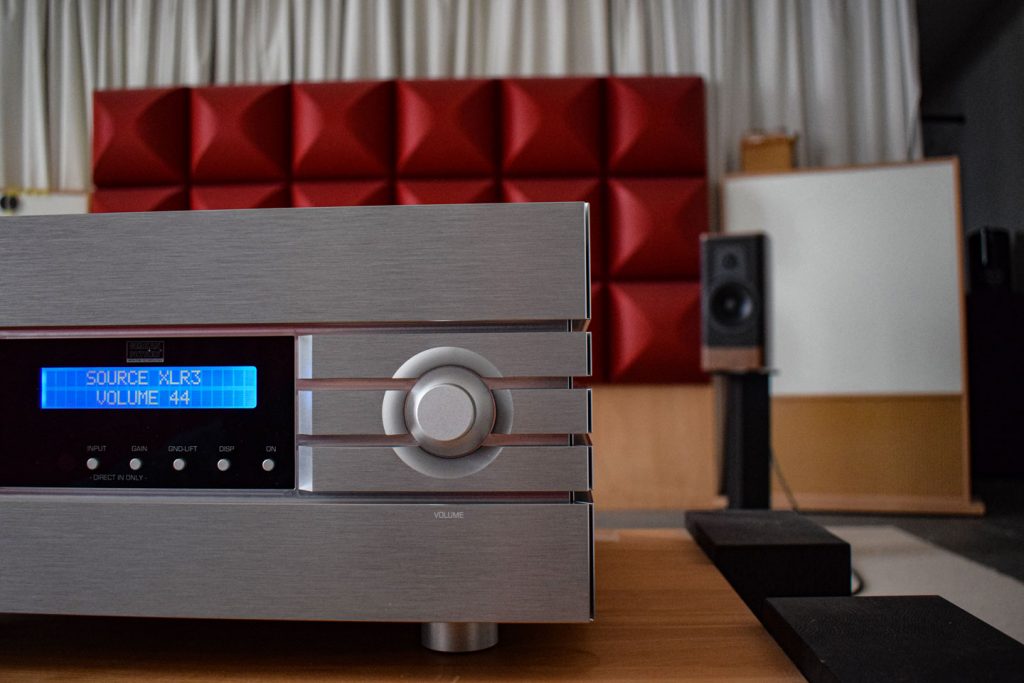
The pre/power amp combination was on a par tonally, but although it was roughly equally powerful and similarly distortion-free at the highest levels, it was not able to match the enormous joy of playing, the thrilling power and the truly impressive bass response of the German Physik. The Westend Audio Monaco held its own for a long time, and most members of the various listening groups found its wonderfully fine openness to be at least on a par. But even he had to bow to this sheer power from below at very high levels. What The Emperor shakes out of the transistors so seemingly effortlessly with dynamic live music (for example David Gilmour Live At Pompeij) is breathtaking. Is fantastic. Is extraordinary.

German Physics The Emperor: the conclusion
Somewhat surprisingly, as a newcomer to the amplifier world, the Emperor has effortlessly managed to play its way into the phalanx of the absolute top amplifiers such as the Soulution 530, D’Agostino Progression or Westend Audio Monaco. The commitment to exclusively analog working methods is oldschool, but also very consistent. Another advantage is his sheer power, which could even make him the primus inter pares. But anyone who calls their integrated amplifier “Kaiser” also expects royal money. The Emperor Stereo Integrated costs just under 30,000 euros. In return, you get a kind of “final” integrated amplifier that is a sensual seducer despite its powerful appearance. Blessed are those who have the money to be seduced…
Rating
Sound QualityUsabilityBuild QualitySummary |
| The rating always refers to the respective price category. |
| | Rarely neutral, powerful sound image |
| | Extremely powerful: 2 x 1,000 watts into 2 ohms |
| | Extreme use of materials, super workmanship |
| | High-end price |
Distribution:
DDD-Manufactur GmbH
Gutenbergstr. 4
63477 Maintal
Tel: 06109 – 502 98 23
www.german-physiks.com
Price (manufacturer’s recommendation):
German Physics The Emperor: 29,900 euros
Mentioned in the article:
First test Dynaudio Contour 20i: setting the bar even higher
Test floorstanding loudspeaker Heco La Diva – cultivated energy
Test high-voltage DAC/preamplifier SPL Director Mk2
Test SPL Performer m1000: High-end mono amps from the studio
Test integrated tube amplifier Westend Audio Monaco



